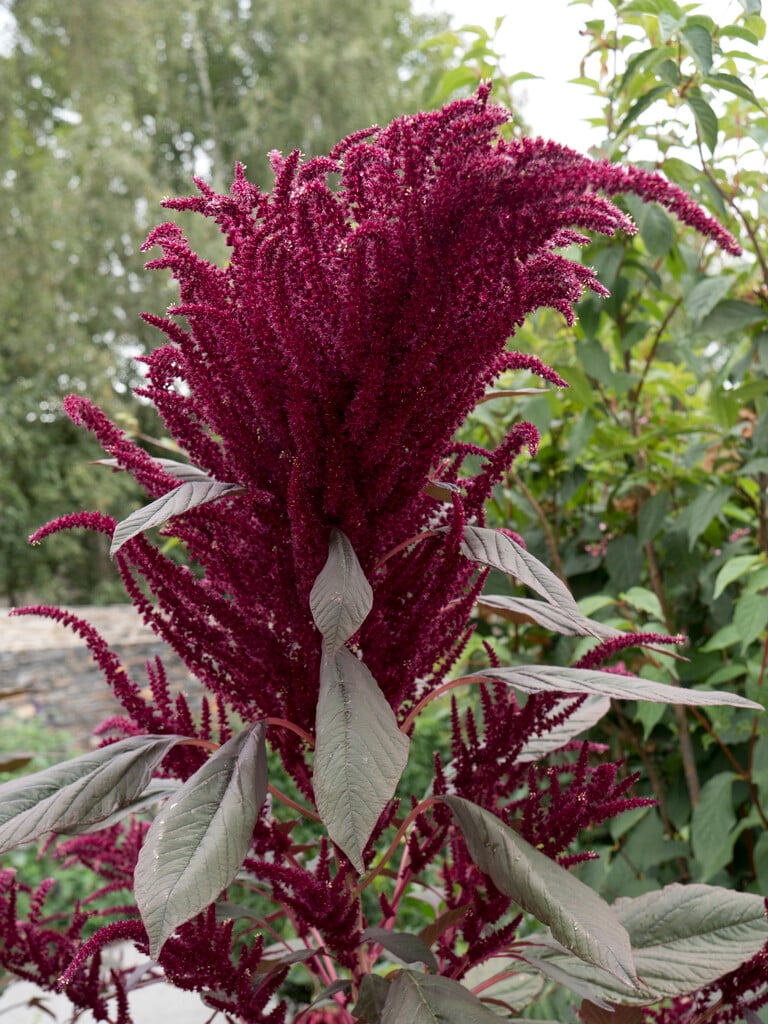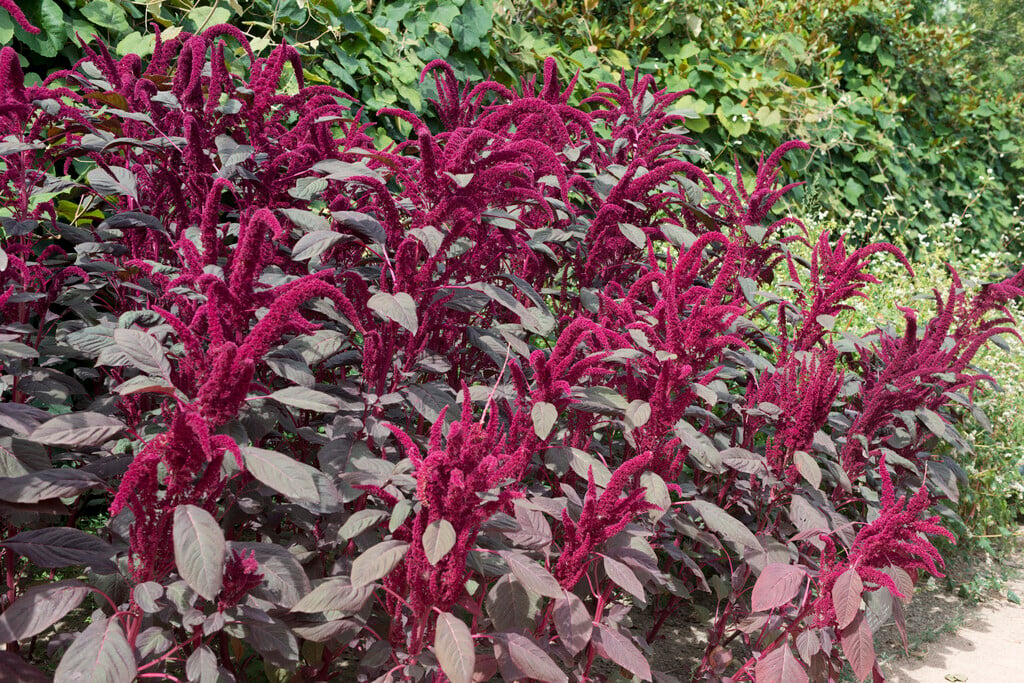Amaranthus cruentus
purple amaranth
An upright, frost-tender annual with stems to 2m tall clothed with ovate, purple-flushed, dark green leaves and topped with clusters of tiny reddish-pink flowers arranged in upright to arching spikes from summer into autumn
Size
Ultimate height
1.5–2.5 metresTime to ultimate height
1 yearUltimate spread
0.1–0.5 metresGrowing conditions
Moisture
Moist but well–drainedpH
Acid, Alkaline, NeutralColour & scent
| Stem | Flower | Foliage | Fruit | |
| Spring | Green Purple | |||
|---|---|---|---|---|
| Summer | Pink Red | Green Purple | ||
| Autumn | Pink Red | Green Purple | ||
| Winter |
Position
- Full sun
Aspect
South–facing or West–facing or East–facing
Exposure
ShelteredDrought resistance
Yes Hardiness
H2Botanical details
- Family
- Amaranthaceae
- Native to GB / Ireland
- No
- Foliage
- Deciduous
- Habit
- Columnar upright
- Genus
Amaranthus can be upright or spreading annuals or short-lived perennials, with simple leaves and tiny flowers borne in dense, erect or pendulous, catkin-like inflorescences in summer and autumn
- Name status
Correct
How to grow
Cultivation
Under glass grow in peat-free, loam-based compost in full light. Outdoors grow in moderately fertile, humus-rich, moist soil in full sun in a sheltered site. Water freely during summer to prolong flowering
Propagation
Propagate by seed
Suggested planting locations and garden types
- Cottage and informal garden
- Prairie planting
- Cut flowers
- Flower borders and beds
Pruning
No pruning required
Pests
May be susceptible to aphids
Diseases
May be susceptible to a virus
Get involved
The Royal Horticultural Society is the UK’s leading gardening charity. We aim to enrich everyone’s life through plants, and make the UK a greener and more beautiful place.

